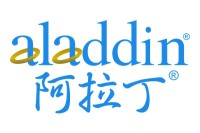PIN-G Reporter for Imaging and Defining Trafficking Signals in Membrane Proteins
互联网
互联网
相关产品推荐

TSLP Responsive Luciferase Reporter Ba/F3 Cell Line
$12000

Trimethyl-Histone H3 (Lys9) Peptide, biotin conjugate,Histones are basic nuclear proteins that are responsible for the nucleosome structure of the chromosomal fiber in eukaryotes.,阿拉丁
¥3058.90

SAMSN1 Homo sapiens SAM domain, SH3 domain and nuclear localization signals 1 (SAMSN1), transcript variant 2, mRNA.
询价

PIN4 兔多克隆抗体
¥1699

IL-5R alpha重组蛋白|Recombinant Human IL-5R alpha Protein (Membrane-bound, His Tag)
¥3480
相关问答

